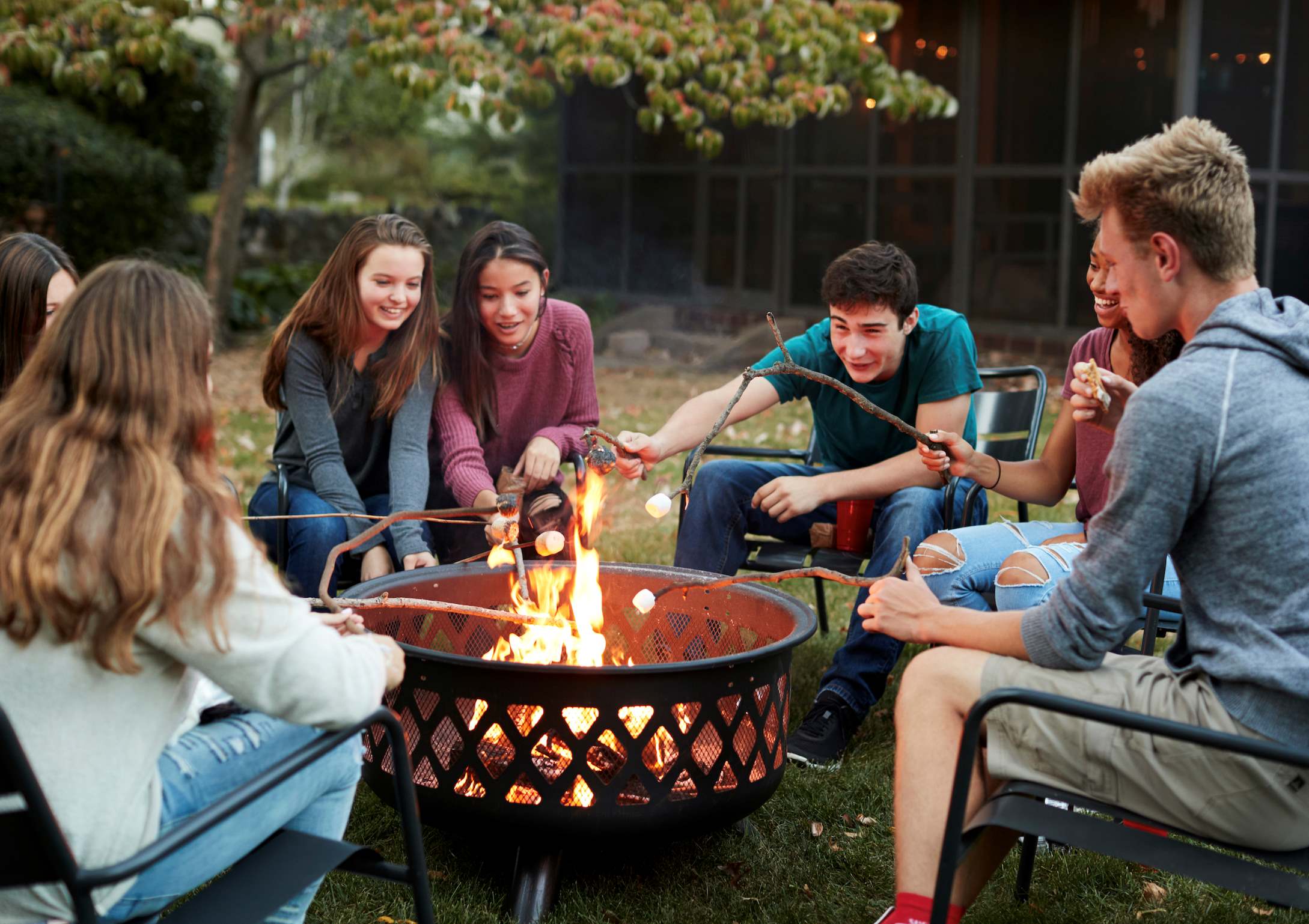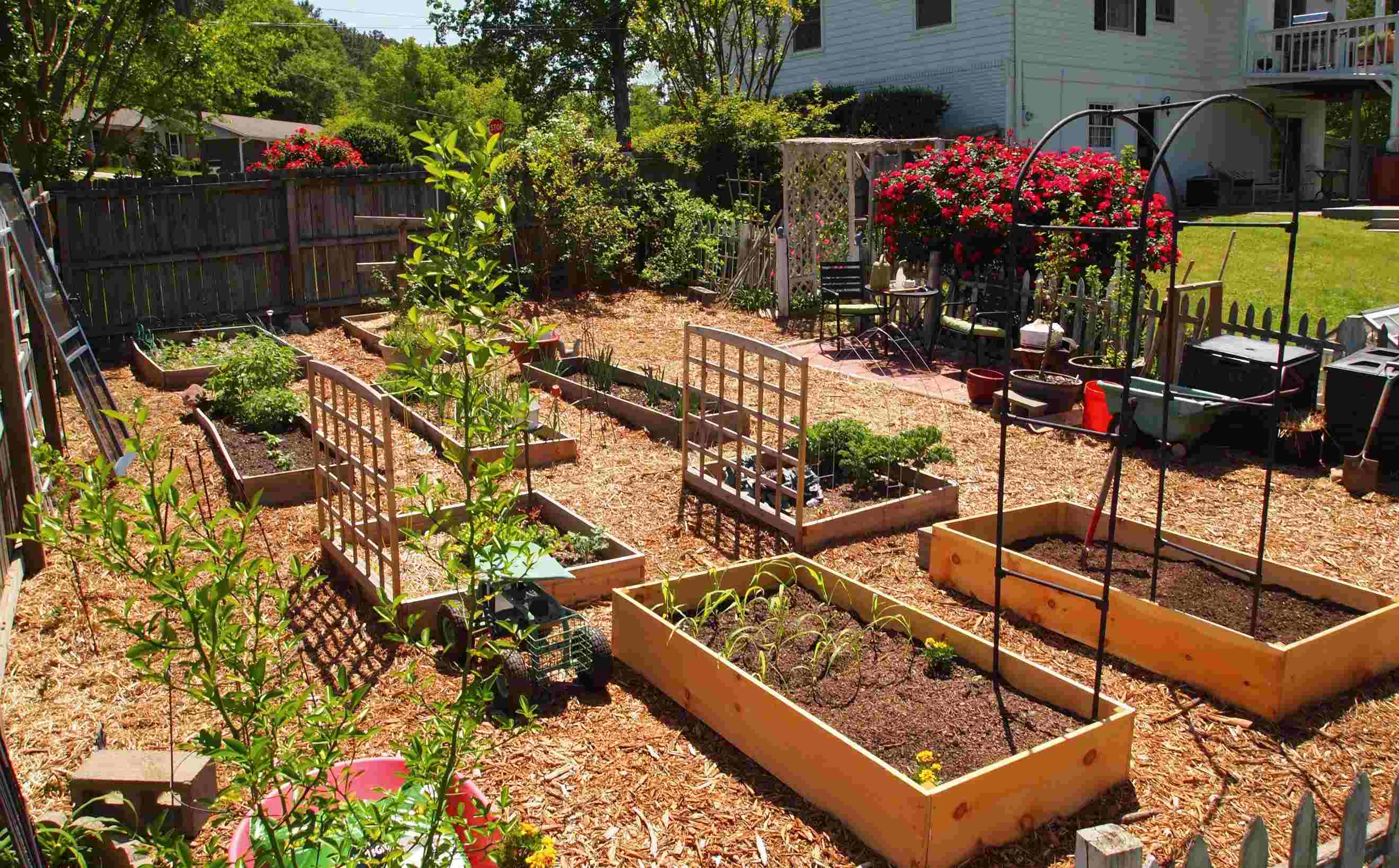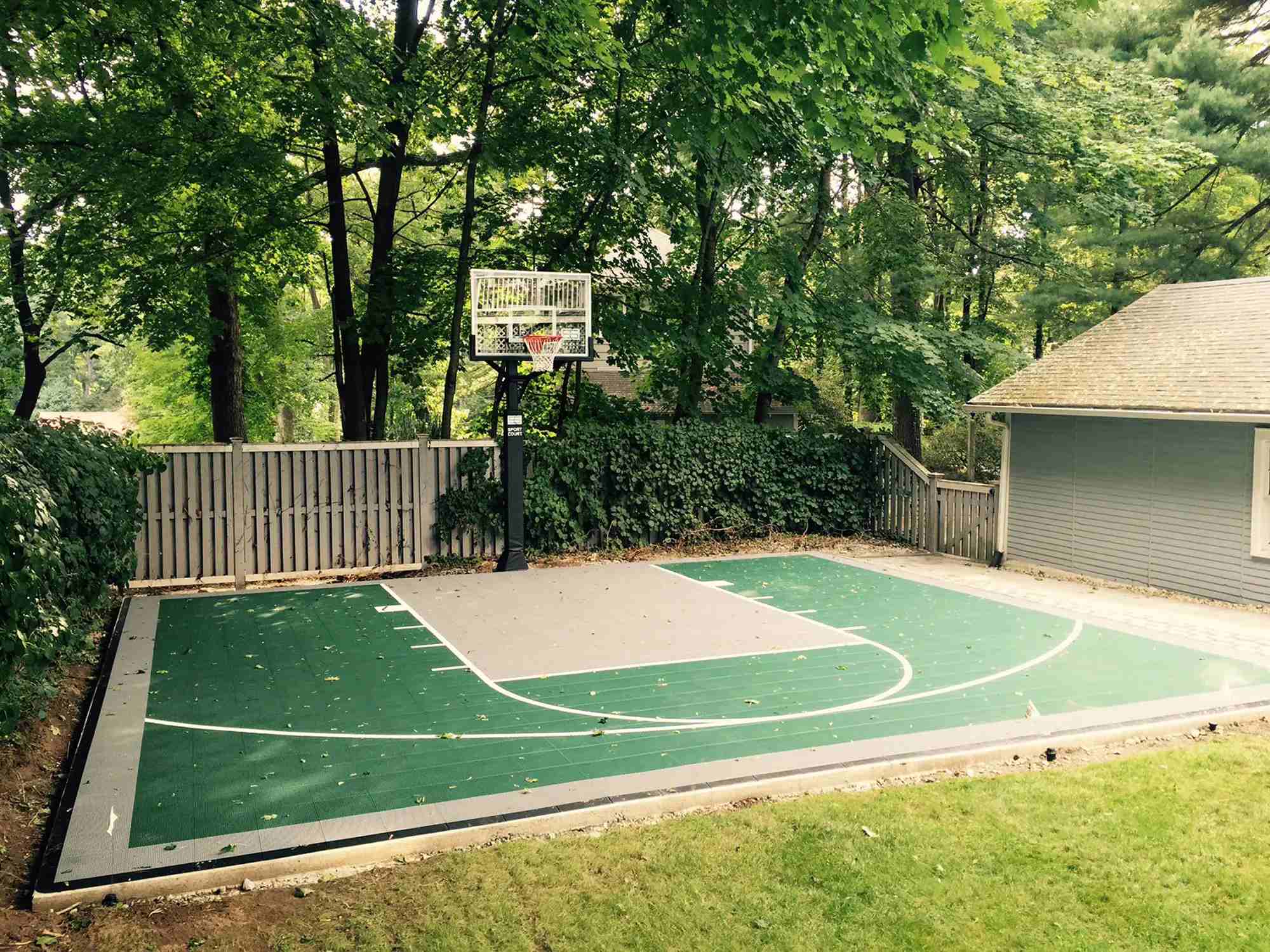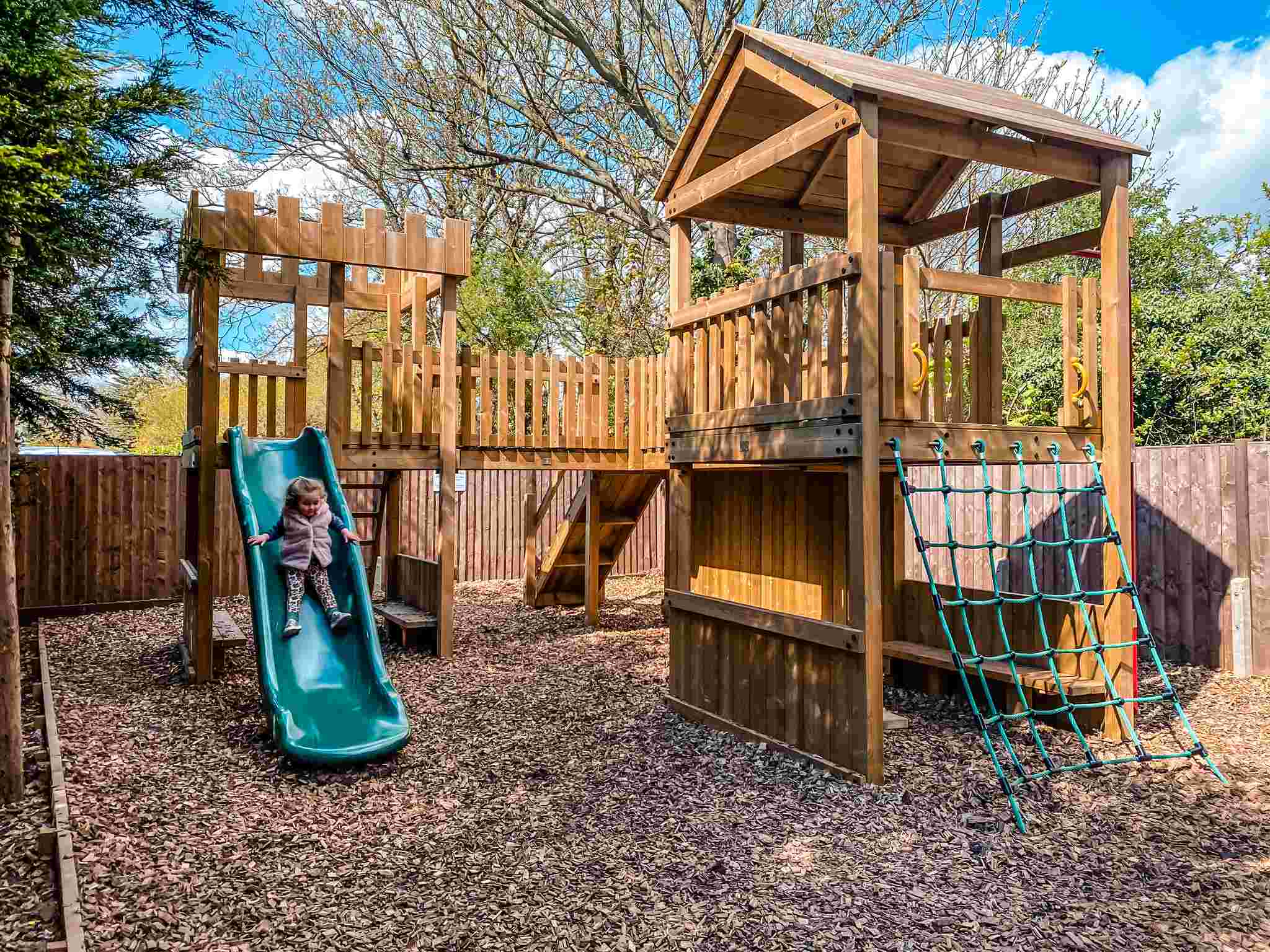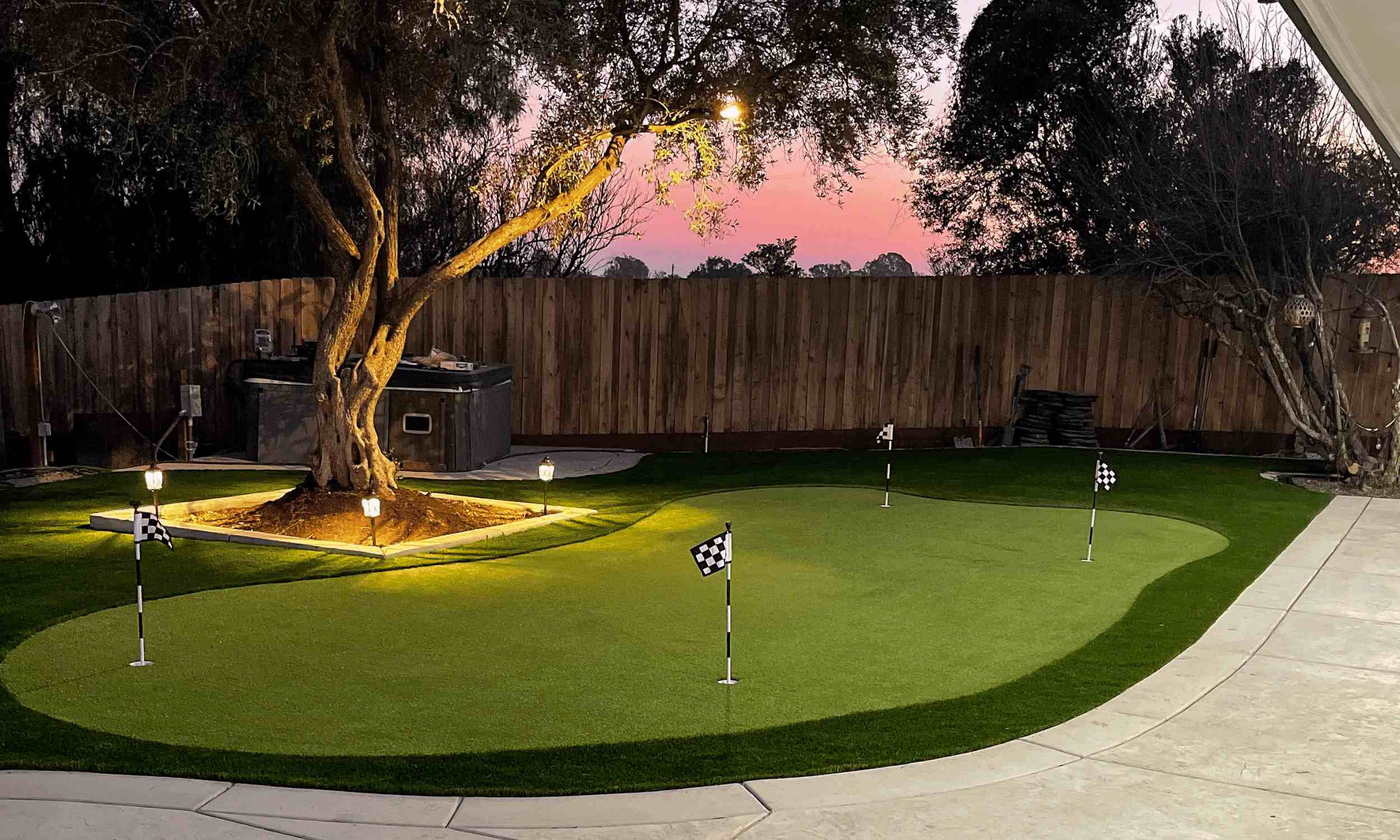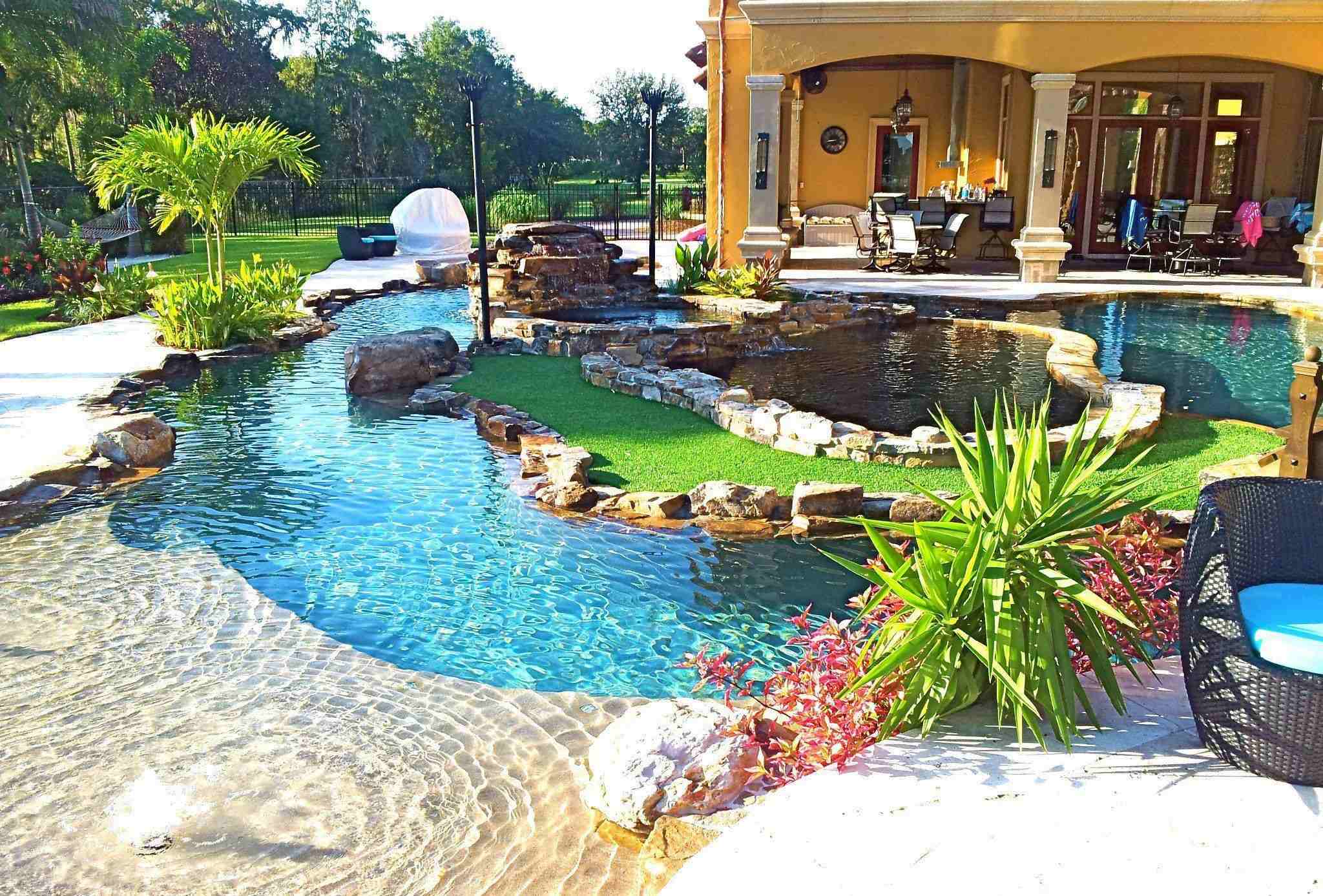Home>Gardening Techniques>DIY Projects>How To Make A Dog Run In Backyard


DIY Projects
How To Make A Dog Run In Backyard
Published: August 5, 2023
Learn how to create a DIY dog run in your backyard with our step-by-step guide on DIY projects. Give your furry friend ample space to play and exercise
(Many of the links in this article redirect to a specific reviewed product. Your purchase of these products through affiliate links helps to generate commission for Chicagolandgardening.com, at no extra cost. Learn more)
Table of Contents
- Introduction
- Step 1: Choose the Right Location for the Dog Run
- Step 2: Determine the Size and Shape of the Dog Run
- Step 3: Gather the Necessary Materials and Tools
- Step 4: Prepare the Ground for the Dog Run
- Step 5: Install the Fencing or Enclosure
- Step 6: Add a Gate for Easy Access
- Step 7: Create a Comfortable Surface for the Dog Run
- Step 8: Provide Shade and Shelter Options
- Step 9: Add Water and Food Stations
- Step 10: Test and Secure the Dog Run
- Conclusion
Introduction
Welcome to the world of DIY projects! If you’re a proud dog owner, you know the importance of providing a safe and secure space for your furry friend to play and exercise. A dog run in your backyard is the perfect solution to give your pet the freedom they need while keeping them within a designated area.
In this comprehensive guide, we will take you through the step-by-step process of creating a dog run in your backyard. Whether you have a large or small yard, this DIY project can be customized to suit your space and your dog’s needs.
Not only will a dog run provide a designated area for your pet to burn off energy, but it also offers a safe space for them to enjoy the outdoors without the risk of roaming into dangerous areas or getting lost. Plus, it gives you peace of mind knowing that your precious pup is secure while you attend to other tasks.
Creating a dog run may seem like a daunting task, but with proper planning and execution, it can be a rewarding project that will benefit both you and your furry companion. So, grab your tools and let’s get started on building the perfect dog run for your backyard!
Step 1: Choose the Right Location for the Dog Run
The first step in creating a dog run is to select the ideal location in your backyard. Consider the following factors to ensure you choose the best spot:
- Size and Shape: Determine the size and shape of the dog run based on the available space in your yard. Consider the size of your dog and how much room they will need to move around comfortably. Keep in mind that the dog run should provide enough space for your pet to exercise and play without feeling cramped.
- Accessibility: Choose a location that allows easy access to the dog run. It should be conveniently located near an entrance or a door that leads to the backyard. This will make it more convenient for you and your dog to enter and exit the designated area.
- Sunlight Exposure: Take into account the amount of sunlight the location receives throughout the day. It’s important to provide shade options within or near the dog run to protect your dog from excessive heat and harmful UV rays.
- Noise Level: Consider the noise level in the chosen location. Avoid placing the dog run near noisy areas such as highways, construction sites, or busy streets. Dogs’ hearing is sensitive, and excessive noise can cause them stress or anxiety.
- Visibility: Evaluate the visibility of the dog run from your home. It’s beneficial to have a clear line of sight from inside the house so you can easily keep an eye on your pet while they are in the dog run.
- Ground Conditions: Survey the ground conditions in the selected area. Ensure it has a level surface to prevent water pooling or potential tripping hazards. Additionally, avoid areas with heavy foot traffic or areas prone to flooding.
By carefully considering these factors, you can select the perfect location for your dog run. Remember, the goal is to create a safe and comfortable space for your furry friend, so take the time to choose wisely.
Step 2: Determine the Size and Shape of the Dog Run
Once you have chosen the location for your dog run, it’s time to determine the size and shape that will best accommodate your pet’s needs. Consider the following factors when determining the dimensions:
- Breed and Size: Take into account the size and breed of your dog. Larger breeds will require more space to move around comfortably, while smaller dogs may be content with a smaller area.
- Activity Level: Consider your dog’s activity level. If your dog is high-energy and loves to run and play, you may want a larger area to accommodate their energetic antics. For dogs that are more sedentary, a smaller space may suffice.
- Multiple Dogs: If you have more than one dog, ensure the dog run is spacious enough for them to play together. Consider their sizes and compatibility to determine the ideal size for multiple dogs.
- Additional Features: If you plan to include additional features within the dog run, such as a dog house or play equipment, factor in the space needed for these elements as well.
When determining the shape of the dog run, consider the layout of your yard and any existing structures. Rectangular or square shapes are common choices for dog runs, as they maximize the available space. However, you can also opt for a more custom shape to fit specific areas in your yard.
Remember, it’s important to strike a balance between providing enough room for your dog to move around and play, while also considering the available space in your yard. By taking these factors into account, you can determine the ideal size and shape of your dog run.
Step 3: Gather the Necessary Materials and Tools
Before you begin building your dog run, it’s important to gather all the necessary materials and tools. By having everything on hand, you can streamline the construction process and avoid unnecessary delays. Here is a list of the materials and tools you will need:
- Fencing Material: Choose a sturdy and durable fencing material that will contain your dog safely within the run. Some popular options include chain-link, welded wire, or vinyl panels.
- Posts and Supports: You will need posts and supports to secure the fencing material. Depending on the chosen fencing type, you may require wooden or metal posts, along with appropriate connectors or fasteners.
- Gate and Hardware: Select a gate that is large enough for easy access to the dog run. Additionally, gather the necessary hardware, such as hinges and latches, to install and secure the gate properly.
- Leveling Tools: To ensure a level foundation for the dog run, gather leveling tools such as a shovel, rake, and a bubble level. These tools will help you prepare the ground properly before installing the fencing.
- Ground Cover: Consider the type of ground cover you wish to use within the dog run. Options include gravel, sand, mulch, or artificial turf. Choose a material that is safe for your dog’s paws and easy to maintain.
- Shade and Shelter Options: If the chosen location lacks natural shade, you may want to include a shade sail, canopy, or other shelter options within the dog run. Gather the necessary materials to provide a comfortable and protected area for your dog.
- Water and Food Stations: Include water and food stations within the dog run for the convenience of your pet. You will need bowls or containers specifically designed for outdoor use.
- Tools: Gather essential tools such as a tape measure, hammer, screwdriver, wire cutters, and a staple gun. These tools will come in handy during the construction process.
Ensure that you have all the required materials and tools before starting the construction of your dog run. This will make the process much smoother and help you complete the project efficiently.
Step 4: Prepare the Ground for the Dog Run
Properly preparing the ground for your dog run is essential for creating a stable and comfortable foundation. Follow these steps to ensure the ground is ready to support the fencing and provide a safe surface for your dog:
- Clear the Area: Start by removing any obstacles, rocks, or debris from the designated area. Clearing the space will prevent potential tripping hazards and provide a clean canvas for the dog run.
- Level the Ground: Use a shovel, rake, and a bubble level to level the ground. Ensure that the surface is even and free of any visible slopes or dips. This will prevent water pooling and create a more stable foundation.
- Address Drainage: Assess the drainage in the area. If there is a risk of water pooling or poor drainage, you may need to install a drainage system or consider using materials that allow water to permeate through.
- Remove Vegetation: Trim or remove any grass, weeds, or plants within the dog run area. This will prevent them from growing into the fencing and make it easier to maintain the space.
- Add a Barrier: To prevent your dog from digging under the fence, add a barrier below ground level. This can be done by burying wire mesh or treated lumber around the perimeter of the dog run.
- Add Weed Barrier: Consider adding a weed barrier fabric before applying ground cover material. This will help prevent weed growth and make maintenance easier in the long run.
- Compact the Ground: Use a tamper or a roller to compact the ground. This will create a solid base for the ground cover material and provide stability for the fencing posts.
By taking the time to properly prepare the ground for your dog run, you are ensuring a sturdy and safe environment for your furry friend. This step is crucial in creating a lasting and enjoyable space for both you and your dog.
Step 5: Install the Fencing or Enclosure
Once the ground is prepared, it’s time to start installing the fencing or enclosure for your dog run. Follow these steps to ensure the fencing is securely in place:
- Measure and Mark: Begin by measuring the perimeter of the dog run area. Use stakes and string to mark the outline of where the fencing will be installed.
- Install the Posts: Depending on the type of fencing you are using, install the posts at regular intervals along the marked perimeter. Use a level to ensure the posts are vertical and secure them firmly into the ground.
- Attach the Fencing Material: Once the posts are in place, attach the fencing material to them. Use appropriate connectors or fasteners according to the type of fencing you have chosen. Ensure that the fencing is stretched tightly to avoid sagging.
- Secure the Fencing: Secure the fencing material to the posts with screws or other appropriate fasteners. Ensure that the fencing is securely attached and there are no gaps where your dog could escape.
- Trim and Finish: Use wire cutters or a saw to trim any excess fencing material. Smooth out any rough edges to prevent injury to your dog or yourself.
It’s important to take your time during the installation process to ensure that the fencing is properly installed and securely in place. This will provide a safe and secure environment for your dog to enjoy.
If you are using an enclosure instead of traditional fencing, follow the manufacturer’s instructions for assembly and installation. Make sure the enclosure is sturdy and will not collapse or be easily knocked over by your dog.
By completing this step, you are one step closer to completing your dog run project. With the fencing or enclosure in place, your dog will have a designated and secure space to play and exercise in the backyard.
Step 6: Add a Gate for Easy Access
Now that the fencing or enclosure is installed, it’s time to add a gate to your dog run. The gate will provide a convenient entry point for you and your dog. Follow these steps to ensure the gate is functional and secure:
- Select the Gate: Choose a gate that is large enough for easy access to the dog run. Consider the height and width of the gate to accommodate both yourself and your dog comfortably.
- Position the Gate: Decide where you want the gate to be located within the dog run perimeter. Ideally, choose a spot that provides easy access from your backyard or home.
- Attach Hinges: Attach the hinges to the gate frame. Make sure the hinges are properly aligned and securely fastened to ensure the gate swings smoothly.
- Install the Gate: Position the gate between the gate posts and attach it to the hinges. Ensure that the gate opens and closes freely without any obstructions.
- Add a Latch: Install a latch or lock mechanism to keep the gate securely closed. Choose a latch that is dog-proof and can withstand your dog’s attempts to open it.
- Test the Gate: Test the gate to ensure it opens and closes smoothly, latches securely, and can withstand pressure from your dog. Make any necessary adjustments or repairs as needed.
The gate is an important component of the dog run as it allows easy access for you and your dog. It’s essential to choose a sturdy and secure gate to prevent any accidental escapes or unwanted entry by other animals.
By adding a gate to your dog run, you are creating a functional and accessible space for both you and your furry friend. Enjoy the convenience of being able to enter and exit the dog run effortlessly while ensuring the safety and security of your pet.
Step 7: Create a Comfortable Surface for the Dog Run
Creating a comfortable surface within the dog run is important for your dog’s safety and enjoyment. Follow these steps to provide a suitable surface for your furry friend:
- Choose the Right Ground Cover: Consider the options for ground cover within the dog run. Choose a material that is safe for your dog’s paws and easy to maintain. Options include gravel, sand, mulch, or artificial turf.
- Prepare the Ground: If necessary, level the ground and remove any debris. Ensure that the ground is even and free from any potential hazards that could harm your dog.
- Install the Ground Cover: Lay down the chosen ground cover material evenly within the dog run. Use a rake or shovel to spread and smooth out the material for a uniform surface.
- Test for Comfort: Walk in the dog run and test the surface to ensure it is comfortable for your dog. Remove any sharp objects or stones that could cause discomfort or injury.
- Maintain the Surface: Regularly maintain the surface by raking or sweeping to remove any debris, leaves, or waste. This will help keep the surface clean and comfortable for your dog.
Creating a comfortable surface within the dog run will enhance your dog’s experience while playing and running around. It provides a safe and suitable area for them to enjoy outdoor activities without causing any discomfort or injury.
Remember to regularly inspect the ground cover for any signs of wear or damage. Replace or repair the surface as needed to ensure it remains comfortable and safe for your furry friend.
With a comfortable surface in place, your dog will have an enjoyable and inviting space to explore within their designated dog run.
Step 8: Provide Shade and Shelter Options
Ensuring your dog has adequate shade and shelter within the dog run is crucial, especially during hot weather or inclement conditions. Follow these steps to provide a comfortable environment for your furry friend:
- Assess Natural Shade: Take note of any existing natural shade in the dog run area. Trees, shrubs, or nearby structures can provide natural shade. Position the dog run in a way that maximizes the available shade.
- Add Shade Sails or Canopies: Install shade sails or canopies to provide additional shade within the dog run. Position them strategically to cover areas that receive the most sun exposure during different times of the day.
- Create a Shelter: Consider adding a dog house or shelter within the dog run. Choose a shelter that is suitable for your dog’s size and provides protection from the elements. Place it in an area that offers maximum comfort and protection.
- Check for Ventilation: Ensure that any shelter or dog house has adequate ventilation to prevent overheating. A well-ventilated shelter will help keep your dog cool and comfortable during hot days.
- Provide Elevated Beds: Place elevated beds or mats within the dog run to provide a cooler and more comfortable surface for your dog to rest on. These beds allow for better airflow and prevent them from lying directly on hot or cold surfaces.
- Keep Water Available: Ensure that there is always fresh water available for your dog within the dog run, especially during hot weather. Use a sturdy and spill-proof water dispenser that can withstand outdoor conditions.
By providing shade and shelter options within the dog run, you are prioritizing your dog’s comfort and safety. Remember to regularly check the shade structures and shelters for any signs of wear or damage and make any necessary repairs or replacements.
With the addition of shade and shelter, your dog will have a welcoming and protected environment within the dog run, no matter the weather conditions.
Step 9: Add Water and Food Stations
Providing water and food stations within the dog run ensures that your furry friend stays hydrated and nourished during their time spent outdoors. Follow these steps to set up the water and food stations:
- Select the Right Water and Food Bowls: Choose durable, non-slip bowls that are suitable for outdoor use. Consider the size of your dog and the amount of food and water they require.
- Position the Stations: Find the optimal location within the dog run to place the water and food stations. Ensure they are easily accessible for your dog but not in a spot where they could become easily tipped over or contaminated.
- Provide Fresh Water: Keep the water bowl filled with fresh, clean water at all times. Change the water regularly, especially during hot weather or if it becomes dirty or contaminated.
- Establish a Feeding Schedule: Determine a feeding schedule that works best for your dog’s needs. Stick to consistent meal times and portion sizes to maintain a healthy diet.
- Keep the Stations Clean: Regularly clean the water and food bowls to prevent the growth of bacteria and ensure your dog’s health. Wash the bowls with mild soap and water, and rinse them thoroughly before refilling.
- Consider Elevated Feeders: If your dog is more comfortable eating from an elevated position, consider using raised feeders to promote better posture and digestion.
By providing water and food stations within the dog run, you are making it more convenient for your dog to stay hydrated and nourished while enjoying outdoor playtime.
Remember to monitor the water level regularly and refill as needed, ensuring your dog always has access to fresh water. Additionally, keep an eye on their food intake to maintain a healthy diet and avoid overfeeding.
With the addition of water and food stations, your dog will have everything they need to stay happy, healthy, and fueled during their time in the dog run.
Step 10: Test and Secure the Dog Run
After completing the construction of your dog run, it’s important to test its functionality and ensure that it is secure. Follow these steps to thoroughly inspect and secure your dog run:
- Inspect the Fencing: Walk around the perimeter of the dog run and check for any loose or damaged fencing. Fix any issues immediately to prevent your dog from escaping or other animals from entering.
- Test the Gate: Open and close the gate multiple times to ensure it operates smoothly and latches securely. Verify that the latch or lock mechanism is in perfect working condition.
- Check for Gaps or Holes: Look for any small gaps or holes in the fencing that your dog may be able to squeeze through. Patch up any openings to ensure the dog run remains secure.
- Secure Buried Barriers: Check the buried barriers that were installed to prevent your dog from digging under the fence. Make sure they are securely in place and not susceptible to shifting.
- Test the Ground Cover: Walk and run in the dog run to ensure the ground cover is comfortable, stable, and free of any hazards. Adjust or replace the ground cover as necessary.
- Inspect Shade and Shelter Structures: Examine any shade sails, canopies, or shelters within the dog run. Ensure they are secure and in good condition, providing adequate protection from the elements.
- Check Water and Food Stations: Make sure the water and food stations are easily accessible and securely positioned. Confirm that the bowls are clean and in good condition.
- Test for Potential Hazards: Look for any potential hazards within the dog run, such as toxic plants, sharp objects, or wires. Remove or modify these hazards to protect your dog from harm.
By thoroughly testing and securing your dog run, you can have peace of mind knowing that your dog is safe and contained within their designated play area.
Regularly inspect and maintain the dog run to address any issues promptly. This will ensure that your dog can enjoy their outdoor time in a secure and enjoyable environment.
Conclusion
Congratulations! You’ve successfully completed the process of creating a dog run in your backyard. By following the step-by-step guide outlined in this article, you have provided your furry friend with a safe and designated space to play, exercise, and enjoy the outdoors.
Choosing the right location, determining the size and shape, gathering the necessary materials, preparing the ground, installing the fencing, adding a gate, creating a comfortable surface, providing shade and shelter options, setting up water and food stations, and testing and securing the dog run were all crucial steps in ensuring the success of this DIY project.
Remember that the dog run is not just a physical structure; it’s a space where your dog can be happy, healthy, and protected. Maintain the dog run by regularly inspecting and addressing any necessary repairs or adjustments.
Enjoy the satisfaction of knowing that you have created a space where your dog can freely roam, play, and burn off energy while remaining within the safety of your backyard. The dog run will give you peace of mind, knowing that your furry friend is secure, and will enhance the bond you share with your loyal companion.
So, grab a ball, a favorite toy, and invite your dog to explore their new play area. Watch as they happily run, play, and enjoy their newfound freedom in the dog run you built with love and care!
